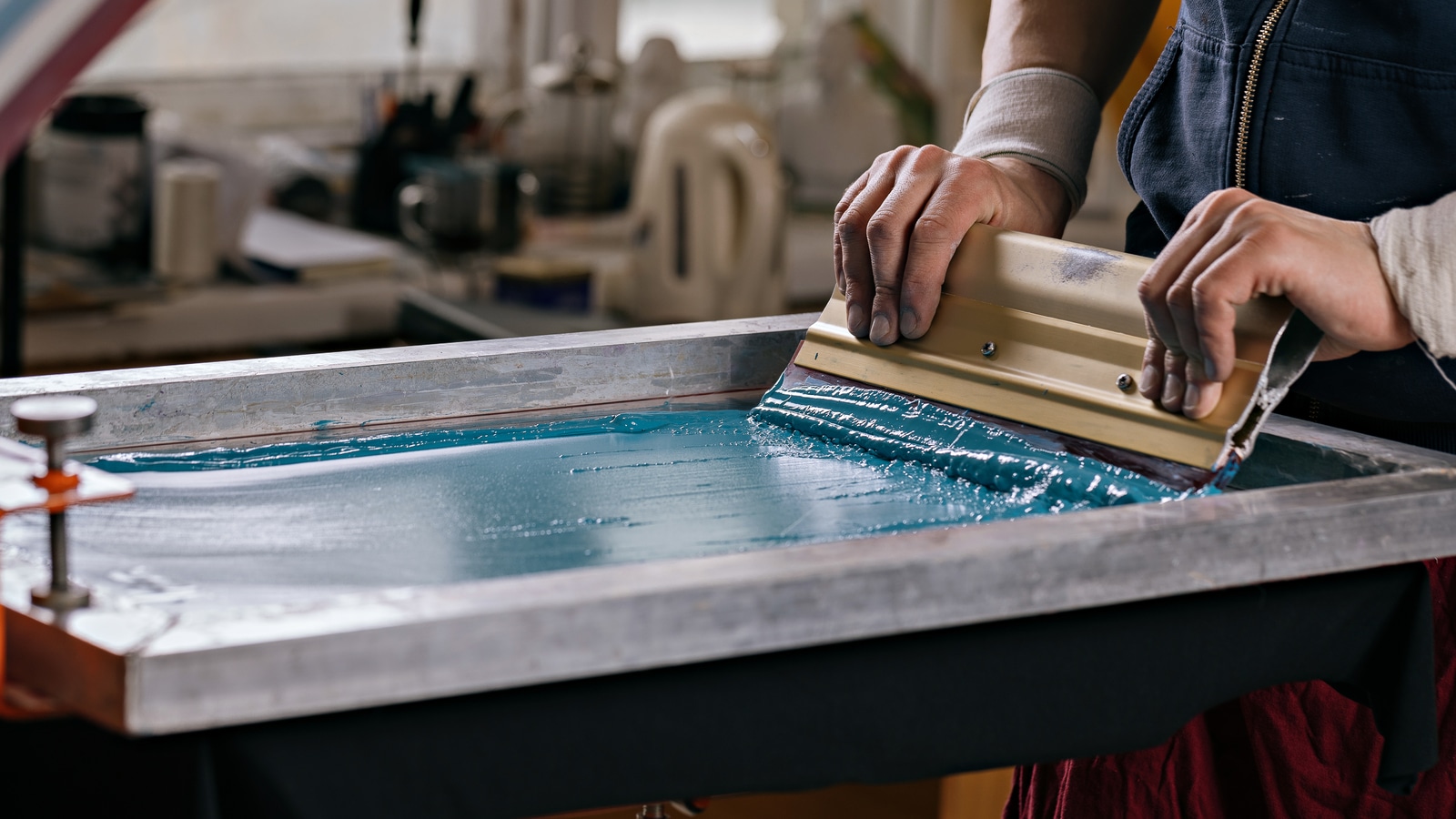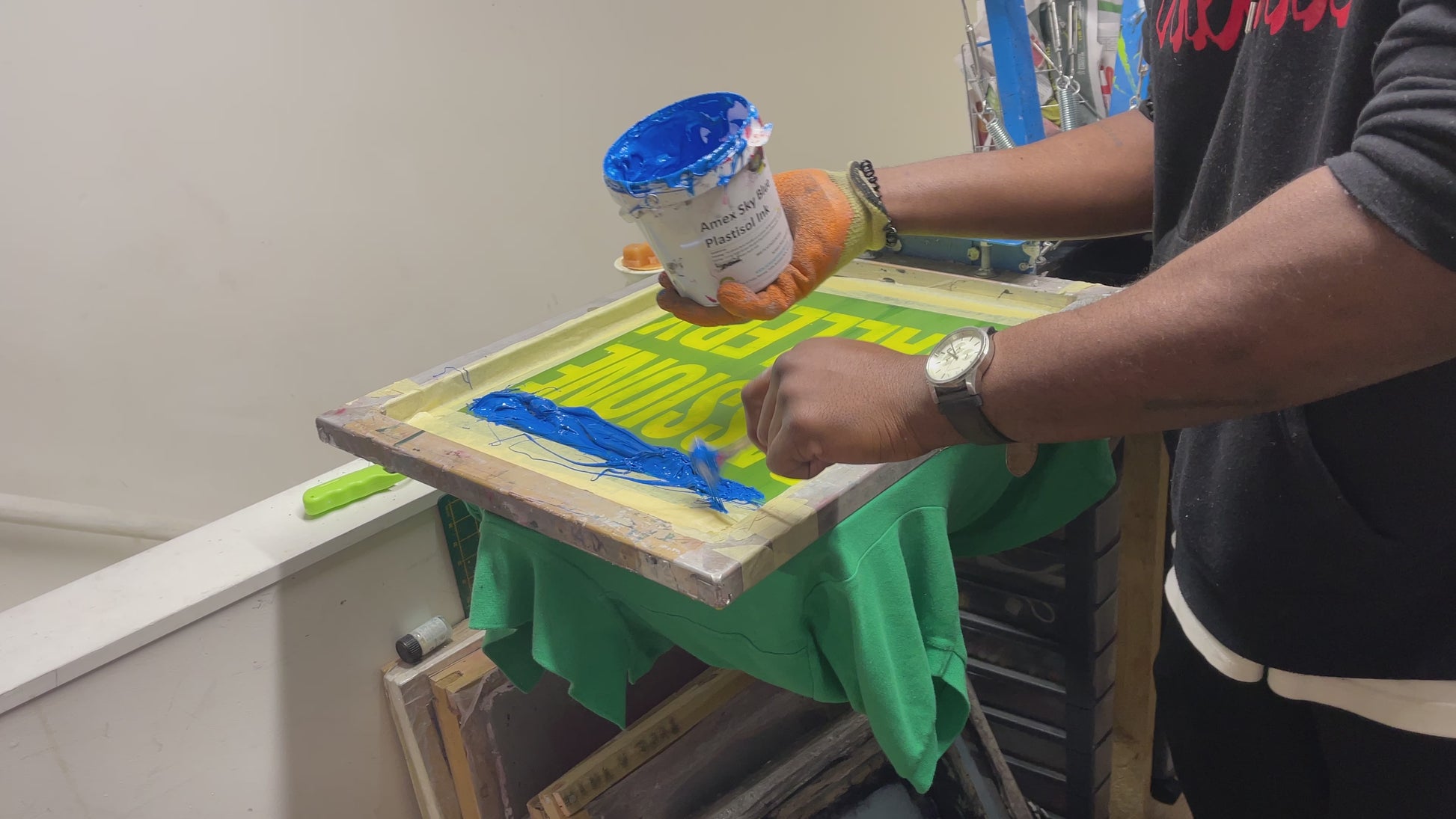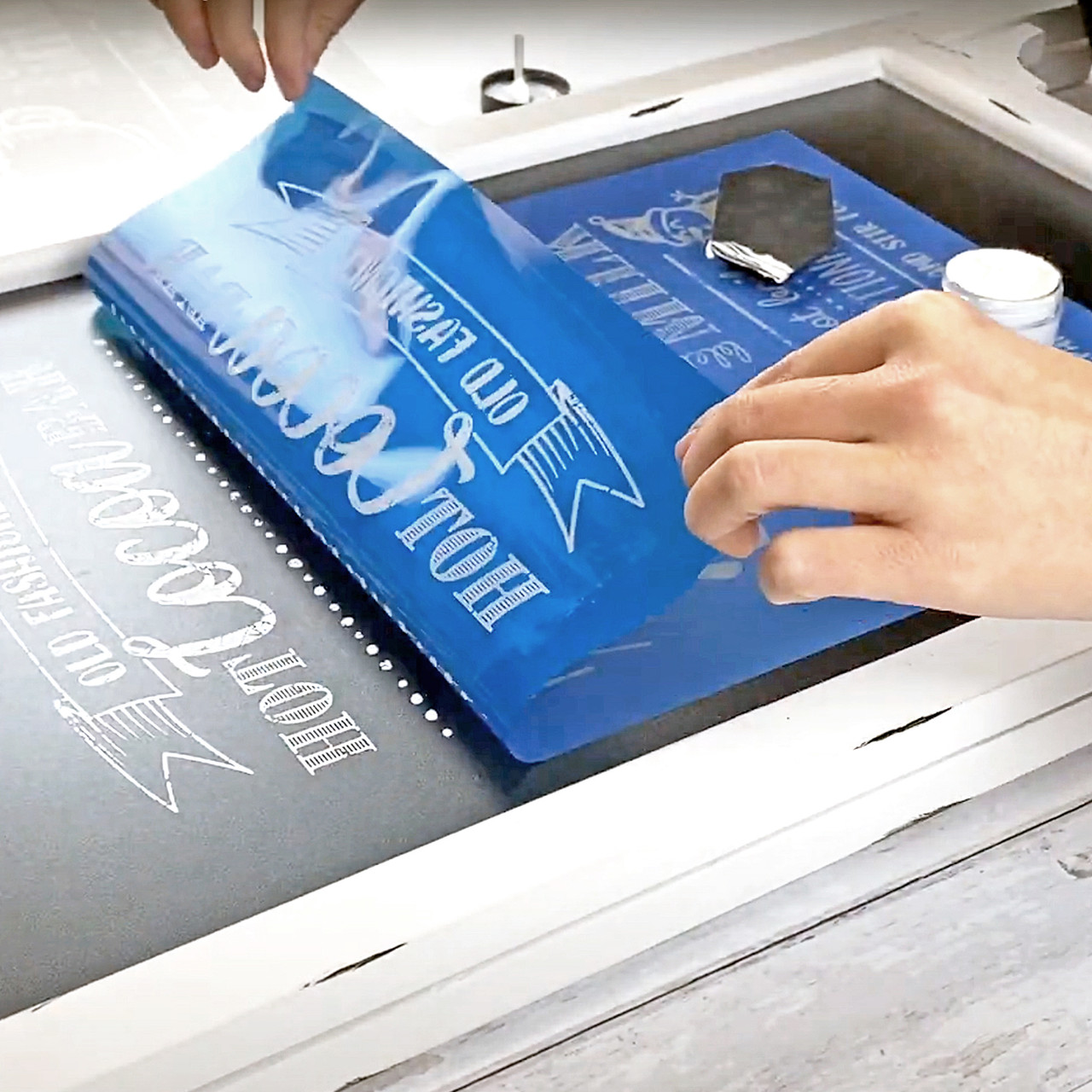High-Volume T-Shirt Printing for Schools and Organizations
High-Volume T-Shirt Printing for Schools and Organizations
Blog Article
Screen Printing Uncovered: Everything You Need to Learn About T-Shirt and Garment Printing Methods
If you have actually ever before questioned how those vivid styles end up on your preferred tees, you remain in the best place. Screen printing is a fascinating technique that combines art with strategy, using unlimited possibilities for creativity. Understanding the fundamentals, from equipment to ink selections, can considerably affect your results. Ready to check out the vital elements that make screen publishing an art kind? Allow's reveal the details that can elevate your tasks.
The Basics of Display Printing: How It Functions
When you dive into screen printing, you'll discover it's both a scientific research and an art. At its core, screen printing entails producing a stencil, or screen, that allows ink to go through only in particular areas (screen printing kit). You begin by picking your style and preparing your display with a light-sensitive emulsion. As soon as you reveal this emulsion to light, it hardens, leaving your design as a negative room.
Setting the screen over the textile, after that utilize a squeegee to push ink through the screen onto the garment. Each step is necessary, and understanding them will boost your screen printing abilities, changing straightforward garments into distinct, expressive items.
Sorts Of Screen Printing Methods
Once you realize the essentials of display printing, it's time to explore the different techniques that can boost your layouts. One preferred approach is traditional display printing, where ink is pushed with a stenciled screen. This method is fantastic for bold, dynamic shades. Then there's water-based ink printing, which supplies a softer feel and is environment-friendly, yet it requires a different technique to treating.
If you're aiming for great details, consider discharge printing. This strategy removes color from the fabric, leaving a soft, classic look. Another choice is plastisol printing, known for its resilience and dazzling colors, making it a favored for many brand names. Experiment with halftone printing to produce slope effects and complex layouts. Each technique has its special charm, so don't think twice to attempt them bent on discover what matches your design best!
Crucial Equipment for Screen Printing
To accomplish sensational results in display printing, having the appropriate devices is essential. You'll need a sturdy screen printing frame, which holds the mesh that transfers your layout onto the garment. Next off, invest in top notch mops; these are necessary for using ink evenly throughout the screen.
Picking the Right Inks and Materials
When choosing inks and products for screen printing, you require to take right into account the sort of ink that functions best for your project. Assume regarding material compatibility to assure your designs look last and great long. Check out environment-friendly ink alternatives to make your printing process more lasting.
Types of Screen Inks
Picking the right screen ink is crucial for accomplishing lively, durable prints that meet your job's demands. There are numerous sorts of screen inks to analyze. Plastisol ink is prominent for its convenience and ease of use, offering exceptional shade opacity on dark textiles. Water-based ink, on the various other hand, provides a softer feel and is eco-friendly, making it ideal for those looking to lessen their ecological impact. Discharge inks eliminate color from the fabric, resulting in a soft, classic look but require details handling. Finally, specialized inks, such as metal or glow-in-the-dark, can include special impacts to your styles. Evaluate your task needs and choose the ink that straightens finest with your preferred outcome.

Textile Compatibility Considerations
Recognizing material compatibility is essential for accomplishing premium screen prints, specifically because various materials respond uniquely to numerous inks. Constantly evaluate your inks on example material to guarantee they stick appropriately and keep shade integrity. Additionally, keep in mind that fabric weight and structure can impact the final outcome, so selecting the appropriate ink and product combo is important for your project's success.
Eco-Friendly Ink Options
Environmentally friendly inks are becoming a prominent selection for display printers who want to minimize their ecological influence while keeping top quality. When picking inks, take into consideration water-based inks, which are much less dangerous and less complicated to cleanse up compared to conventional solvents.
Furthermore, search for inks made from renewable resources, such as soy or vegetable-based alternatives. By picking the best inks and materials, you'll not only create stunning layouts however also add to an extra lasting printing process. Make the switch, and your prints will certainly show your commitment to the environment!
Preparing Your Design for Display Printing

File Format Requirements
To assure your style looks sharp and vibrant on textile, you'll require to pay close focus to file style requirements for screen printing. Start with vector documents like AI or EPS, as they can be scaled without shedding high quality. If you utilize raster images, choose high-resolution files, such as TIFF or PNG, preferably at 300 DPI. Stay clear of utilizing JPEGs, as they can lose clarity when resized. Also, make certain your layout has a transparent background to stop unwanted white sides on your prints. Lastly, keep shade settings in mind; CMYK is typical for display printing, so convert your RGB designs accordingly. By adhering to these standards, you'll set your artwork up for an effective print.
Color Splitting Up Techniques
Shade splitting up is an essential action in preparing your design for screen printing, and grasping it can greatly improve your print top quality. You'll need to break your style right into individual colors, as each color calls for a separate screen throughout printing. Beginning by recognizing all the colors in your layout and develop layers each. You can make use of software application like Adobe Photoshop or Illustrator to isolate and separate shades effectively. Be certain to conserve each layer as a separate file, normally in a style like TIFF or PSD. This accuracy not just guarantees exact color representation but likewise enhances the printing procedure. By taking notice of shade separation, you'll achieve lively and expert results in your screen-printed garments.
Resolution and Size
Attaining the most effective cause display printing begins with assuring your design has the right resolution and size. Preferably, your art work needs to go to the very least 300 DPI (dots per inch) for sharp, clear prints. Your final item may look pixelated and less than professional. if you make use of lower resolution.
When it concerns dimension, think about the dimensions of your print location. Style your artwork to match the last print size, preferably producing it in the actual measurements you'll be printing. By doing this, you'll prevent any kind of unanticipated scaling issues.
Constantly inspect your style in both vector and raster layouts. Vector graphics can be scaled without shedding quality, making them excellent for screen printing. Preparing appropriately will assure your design looks fantastic on every garment!
Step-by-Step Screen Printing Process
Screen printing is a vibrant process that permits you to create lively designs on various surface areas. To begin, you'll require a screen, emulsion, and your selected ink. Initially, prepare your screen by cleaning it extensively. Next off, apply the emulsion uniformly and allow it dry in a dark location. As soon as dry, subject your screen to light with your style put on it, which will certainly solidify the solution where the light hits, creating a stencil - screen printing kit.
Pour ink onto the display and utilize a squeegee to press the ink via the pattern onto the textile. Raise the screen very carefully and let the print dry. You've efficiently display printed your design.
Tips for Successful Display Printing Projects
While you're diving right into your screen printing projects, bear in mind that prep work is essential to success. Start by collecting all your products-- inks, garments, squeegees, and displays. A tidy work area assists avoid unwanted mistakes, so clean prior to you begin.
Following, validate your artwork is high-resolution and effectively sized for your garment. Evaluate your display for appropriate exposure and tidy it completely to avoid spots. When mixing your inks, adhere to the maker's guidelines to achieve the right consistency.
Throughout printing, apply also pressure with your squeegee for consistent outcomes. Don't rush; take your time to confirm each print meets your standards. After printing, allow your garments dry totally before dealing with or packaging them.
Finally, always keep a sample of your help future reference. In this manner, you can assess your development and boost your techniques over time. Pleased printing!

Regularly Asked Inquiries
The length of time Does It Require To Establish a Screen Printing Task?
Setting up a display printing task usually takes about thirty minutes to an hour. You'll prepare the displays, mix inks, and change the press. The moment varies based on intricacy and experience, so stay arranged!
Can I Publish on Various Material Types Making Use Of the Exact Same Strategy?
Yes, you can publish on different fabric kinds using the very same strategy, but you'll require to adjust your inks and setups. Some textiles take in ink differently, so experimenting assurances the very best results for each and every material.
What Prevail Errors to Prevent in Screen Printing?
When display printing, avoid typical blunders like utilizing the wrong ink, neglecting correct exposure times, or avoiding pre-press checks. Constantly examine your configuration and keep clean screens to assure top quality results each time.
Just How Can I Correctly Tidy and Maintain My Display Printing Devices?
To appropriately tidy and maintain your display printing equipment, you need to consistently wash screens with proper solvents, examine squeegees for wear, and guarantee all tools are kept dust-free and completely dry. Consistency boosts and avoids expensive repair services efficiency.
Is Display Printing Eco-friendly Contrasted to Other Approaches?
Display printing can be extra eco-friendly than various other approaches, especially if you utilize eco-conscious products and water-based inks. By choosing lasting supplies and techniques, you reduce waste and minimize your effect on the earth.
Display t-shirt printing Printing Uncovered: Every Little Thing You Required to Know Regarding Tee Shirt and Garment Printing Techniques
At its core, screen printing involves creating a pattern, or display, that permits ink to pass with only in particular areas. Position the display over the textile, after that utilize a squeegee to push ink via the display onto the garment. One popular method is traditional display printing, where ink is pushed through a stenciled display.When choosing inks and products for screen printing, you need to take right into account the type of ink that functions ideal for your job.
Report this page